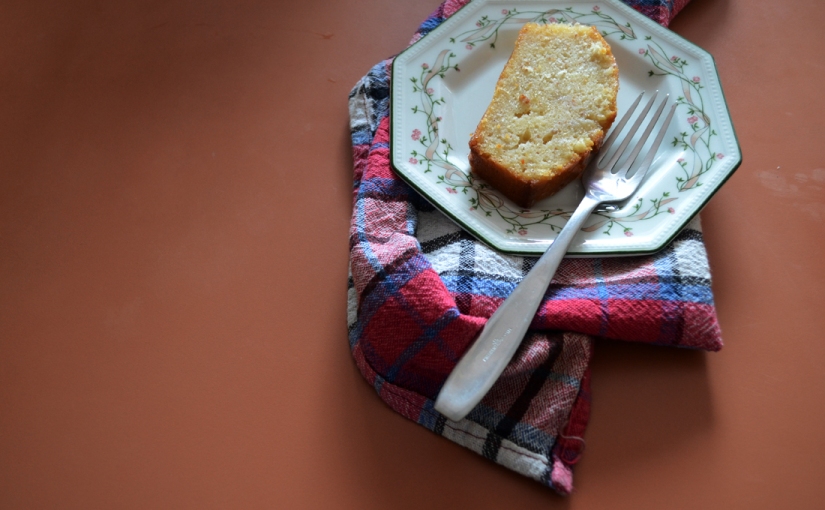You guys sure know a good thing when you see one. And thank God for that because I have more.

I’m in Kolkata visiting my folks and the last time I checked, the bloody Nor’westers had blown us off our easy chairs.
We spent all of yesterday’s evening running around the flat, stuffing the sills of windows and bottoms of doors with old tablecloths, so the thunderstorm wouldn’t slip in. And last Friday at about 6 in the morning a persistent and unholy sounding wailing woke me up. It was the wind gushing through the slits of our aluminum window frames. I sat up on my bed to find the city swaying and thrashing about in the angriest storm I’ve seen in a long time. It then proceeded to scare away the sun, who stayed hidden for a further two hours. Wimp.

But it is hard to complain about thunder and storms when you’re one of those who actually gets all excited and tingly at the appearance of dark clouds. In the moments of a boring single life that revolves around reinforced cement concrete, wolfing down leftover potato salad at the sink and trying to make rent, the deep rumbling of a thunderstorm can induce the same kind of excitement that is associated with the anticipation of a first kiss.
Although London hasn’t really disappointed me over the years with her constant supply of dark clouds – she still has a lot to learn from Kolkata when it comes down to a proper at-Nature’s-mercy thunderstorm. And this year, the Nor’westers collided with Easter weekend.
Honestly, we’re not big on Easter. The rest of London is obviously very pro-Easter. But as far as celebrations go, over here they are as follows:
– we absolutely love Christmas. No. I mean, love it.
– we spend a lot of money on Boxing Day.
– we sleep till late and watch the telly on the Queen’s birthday.
– we devote an entire day to alcohol. Its called St Patty’s Day.
– we are close to indifferent about the Fourth of July.
– we know absolutely nothing about Thanksgiving.
– we would very much like to get to know Halloween, but haven’t actually had a chance so far.
– New Year’s Eve is another excuse for us to eat.
And then comes Easter. Our Easter celebrations were half-hearted at best when I was growing up in India and nothing has changed much. As kids we’d wake up early on the holiday, jump around because school’s off, pop a couple of Creme Eggs into our mouths and then end the day with lots of curry.
But you can’t really blame us. As Indians, and mostly Hindus, we have to get through celebrating more than 108 Gods and Goddesses before we can actually get anywhere close to anything to do with the last name Christ, on the annual list. And by the time we get to Jesus, we’re already exhausted and stuffed till here with food.
However, if you’re anything like us, you always have a little room left over for a little more food.
Especially if that food is a tart. A dessert tart. A coconut custard dessert tart. With chocolate. You can’t go wrong with this.
With all the coconut macarons that were flying through the air all throughout Easter, this tart does well when it comes to “sticking to the theme”. But I want to talk to you more about the short crust pastry than the custard filling. Because the pastry starts with boiling butter. You heard me. Boiling butter.

I haven’t had as much experience with tart shells as I’ve had with cakes and candy. I blame the idea of a “foolproof pastry recipe” that most recipes authors throw up. That idea is ridiculous. If its fool-proof then why, dear Sir/Madam, am I scraping it off my tart tin instead of cutting it? No wonder I’ve given up on homemade puff pastry.
Recipe authors need to realize that sometimes they have to deal with blatantly disobedient people like me who never get things right the first time around. But this tart dough à la française is something else. It comes from David Lebovitz and belongs to Promenades Gourmandes’ Paule Caillat. It’s not your typical rub-chilled-butter-nubbins-into-flour kind of dough recipe. It begins with browning butter in the oven, followed by dumping a sizeable amount of flour into the hot butter. The dough is then spread and patted onto a tart tin and blind baked without weight – no battling with rolling pins, cling film or dried beans. And best of all, no chill-time-in-the-refrigerator to wait around for. The result is a crisp and flaky pastry with a distinct butter taste [oh well, obviously] that is a far cry from temperamental and fussy, soggy and fall-apart versions that I’ve had to put up with in the past. And all that makes it – in my book – a keeper.

I am obviously no Jackson Pollock.

Coconut custard on pâte sucrée a la française
from Paule Caillat via David Lebovitz
NOTE: The custard has a base of coconut milk instead of cream or whole milk, which puts the exclamation mark after coconut[!]. And although the tart tastes good just by itself, adding a bit of chocolate in the end really helps. I made two versions of this tart – for the first one, I melted dark chocolate in the microwave and randomly splashed it over the baked tart, after it had cooled [in the photograph]. For the second one, I toasted some dessicated coconut [or freshly grated coconut] in a non-stick pan till they browned at the edges, and then sprinkled them over the filling before baking the tart. This results in a nicely caramelized – or macarooned – finish.
For the pastry:
90gm (3 oz) unsalted butter, cut into pieces
1 tbsp vegetable oil (eg, sunflower, canola, peanut etc)
3 tbsp water
1 tbsp sugar
1/8 tsp salt
1 cup (125 gm) all-purpose flour
Pre-heat the oven to 210º C. Combine butter, oil, water, sugar and salt in a medium-sized oven-proof bowl. Place the bowl in the oven for 15 minutes, until the butter starts bubbling and the edges start to just brown. Remove the bowl from oven (be careful, the bowl will be hot and the mixture might sputter a bit), dump the flour into the butter and stir it in quickly, until it comes together and forms a ball which pulls away from the sides of the bowl. Transfer the dough to a 8-9 inch tart tin with a removable bottom and spread it a bit with a spatula. Once the dough is cool enough to handle, keep a small piece of dough – about the size of a raspberry – aside and pat the rest into the tin with the heel of your hand. Use your fingers to press it up the sides of the tin. You could pinch the edges against the tart tin with a fork if you want. Prick the dough all over with a fork and bake the shell for about 15 minutes, or until the dough is golden brown. Remove from the oven and if there are any sizeable cracks, use the bits of reserved dough that you had kept aside, to fill in and patch them. The shell need to be cooled before filling.
For the filling:
1 1/3 cups (400ml) of coconut milk
3/4 cup of granulated sugar
1 dried bay leaf
1/4 tsp grated nutmeg
2 eggs
2/3 cup of freshly grated coconut
1/2 cup of dessicated coconut, toasted (optional – see head note)
Dark chocolate, to garnish (optional)
Pre-heat oven to 180º C. In a saucepan combine coconut milk, sugar, bay leaf and nutmeg on high heat. Stir to dissolve the sugar. In a large bowl, whisk the two eggs. As soon as the coconut milk mixture starts to bubble up take the saucepan off the heat and pour its contents into the eggs slowly, while whisking continuously so that the eggs do not scramble. Pour the mixture back into the saucepan and let it simmer on low heat, stirring constantly with a wooden spoon for about 5-8 minutes, till the custard coats the back of the spoon. Strain the custard back into the bowl that initially had the eggs in it and stir in the freshly grated coconut. Let the mixture cool completely before filling the tart shell. If you opt for toasted dessicated coconut (see head note), then sprinkle these over the unbaked tart now. Bake for 30-40 minutes till the centre is slightly wobbly but looks just set. Cool tart in its tin completely. To garnish, spoon melted dark chocolate on top. Serve thick wedges with lightly whipped cream or all by themselves.












